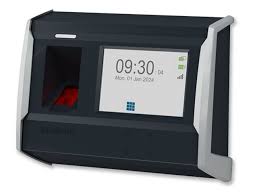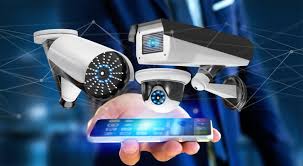In today’s fast-paced world, businesses and organizations are constantly seeking ways to streamline their operations and increase efficiency. One technology that has revolutionized the way attendance is managed in various settings is the biometric fingerprint attendance system.
The biometric fingerprint attendance system utilizes cutting-edge biometric technology to accurately record and track employees’ attendance. Instead of traditional methods such as manual attendance registers or swipe cards, this system relies on each individual’s unique fingerprint for verification.
One of the key advantages of a biometric fingerprint attendance system is its unparalleled accuracy. Each person’s fingerprint is distinct and cannot be duplicated, ensuring that the recorded data is reliable and tamper-proof. This eliminates any possibility of buddy punching or fraudulent timekeeping practices, leading to more precise and transparent attendance records.
Furthermore, the biometric fingerprint attendance system offers convenience and efficiency for both employees and management. Employees no longer need to remember to carry an access card or key in a PIN; all they need is their finger for quick and hassle-free clock-ins and clock-outs. This not only saves time but also reduces the administrative burden on HR personnel.
From a security standpoint, the biometric fingerprint attendance system provides an extra layer of protection for sensitive data. Fingerprint information is encrypted and stored securely, minimizing the risk of unauthorized access or data breaches. This ensures that employee privacy is safeguarded while maintaining a high level of security for the organization.
In conclusion, the biometric fingerprint attendance system represents a significant advancement in attendance management technology. Its accuracy, convenience, efficiency, and security features make it an invaluable tool for businesses looking to enhance their operational processes and ensure accurate timekeeping practices.
7 Advantages of Implementing a Biometric Fingerprint Attendance System
- Highly accurate due to the uniqueness of each person’s fingerprint.
- Eliminates buddy punching and time theft, ensuring fair attendance tracking.
- Convenient for employees as they only need their fingerprint for clock-ins and clock-outs.
- Reduces administrative burden on HR personnel by streamlining attendance management.
- Enhances security by encrypting and securely storing fingerprint data, minimizing unauthorized access.
- Provides real-time tracking of employee attendance, facilitating better workforce management.
- Offers a cost-effective solution in the long run by reducing manual errors and improving efficiency.
Challenges of Biometric Fingerprint Attendance Systems: Costs, Maintenance, Privacy, and Reliability Concerns
- Initial setup costs can be high, especially for small businesses.
- Fingerprint sensors may require regular maintenance and calibration to ensure accurate readings.
- In some cases, individuals with certain skin conditions or injuries may face difficulties in getting their fingerprints recognized.
- Privacy concerns may arise regarding the storage and use of biometric data, leading to potential legal implications.
- System downtime or technical issues could result in disruptions to attendance tracking and employee productivity.
Highly accurate due to the uniqueness of each person’s fingerprint.
The high accuracy of the biometric fingerprint attendance system is attributed to the unique nature of each individual’s fingerprint. As no two fingerprints are alike, this technology ensures precise identification and verification of employees, eliminating the possibility of errors or fraudulent practices. By leveraging this inherent uniqueness, the system provides a reliable and tamper-proof method for recording attendance, enhancing overall efficiency and trustworthiness in timekeeping processes.
Eliminates buddy punching and time theft, ensuring fair attendance tracking.
One of the key advantages of implementing a biometric fingerprint attendance system is its ability to eliminate buddy punching and time theft, thereby ensuring fair attendance tracking. By requiring employees to verify their identity using their unique fingerprints, this system prevents unauthorized clock-ins or clock-outs on behalf of colleagues. This not only promotes accountability and honesty among employees but also helps organizations accurately track and record each individual’s attendance, leading to a more transparent and equitable work environment.
Convenient for employees as they only need their fingerprint for clock-ins and clock-outs.
The biometric fingerprint attendance system offers unparalleled convenience for employees as they simply need their fingerprint for clock-ins and clock-outs. Gone are the days of carrying access cards or remembering PINs; with just a quick scan of their unique fingerprint, employees can effortlessly record their attendance. This streamlined process not only saves time but also eliminates the hassle of traditional attendance tracking methods, making it a user-friendly and efficient solution for both employees and management alike.
Reduces administrative burden on HR personnel by streamlining attendance management.
The biometric fingerprint attendance system offers a significant advantage by reducing the administrative burden on HR personnel through streamlined attendance management. By automating the process of tracking employee attendance using unique fingerprints, this system eliminates the need for manual data entry and verification tasks traditionally performed by HR staff. As a result, HR personnel can allocate their time and resources more efficiently towards strategic initiatives and employee development programs, leading to increased productivity and overall operational effectiveness within the organization.
Enhances security by encrypting and securely storing fingerprint data, minimizing unauthorized access.
One of the key advantages of a biometric fingerprint attendance system is its ability to enhance security by encrypting and securely storing fingerprint data, thereby minimizing unauthorized access. By utilizing advanced encryption techniques, the system ensures that sensitive fingerprint information is protected from unauthorized individuals. This robust security measure not only safeguards employee data but also reduces the risk of fraudulent activities such as identity theft or unauthorized system access. With secure storage mechanisms in place, organizations can have peace of mind knowing that their data is well-protected and inaccessible to unauthorized parties, thus maintaining a high level of security and confidentiality.
Provides real-time tracking of employee attendance, facilitating better workforce management.
One of the key advantages of a biometric fingerprint attendance system is its ability to provide real-time tracking of employee attendance, enabling better workforce management. By capturing attendance data instantly as employees clock in and out using their unique fingerprints, this system offers up-to-the-minute insights into staff presence and availability. This real-time tracking feature allows managers to make informed decisions promptly, optimize resource allocation, and ensure efficient workflow management. With accurate and timely attendance information at their fingertips, organizations can enhance productivity, streamline operations, and effectively manage their workforce with greater precision and agility.
Offers a cost-effective solution in the long run by reducing manual errors and improving efficiency.
Implementing a biometric fingerprint attendance system offers a cost-effective solution in the long run by significantly reducing manual errors and enhancing efficiency. By eliminating the need for manual data entry and paper-based attendance tracking methods, organizations can save both time and resources. The accuracy of the biometric system ensures that payroll calculations are precise, reducing the risk of errors and potential discrepancies. Additionally, the streamlined process of using fingerprint verification for attendance not only boosts productivity but also minimizes administrative overhead, ultimately leading to cost savings and improved operational efficiency over time.
Initial setup costs can be high, especially for small businesses.
One notable drawback of the biometric fingerprint attendance system is that the initial setup costs can be prohibitively high, particularly for small businesses with limited budgets. The investment required for purchasing and installing the necessary hardware and software components, as well as training employees on how to use the system effectively, can pose a financial challenge for smaller organizations. This upfront cost barrier may deter some businesses from adopting this advanced technology, despite its numerous benefits in terms of accuracy and efficiency in attendance management.
Fingerprint sensors may require regular maintenance and calibration to ensure accurate readings.
One of the drawbacks of biometric fingerprint attendance systems is that fingerprint sensors may require regular maintenance and calibration to ensure accurate readings. Over time, factors such as dust, dirt, or wear and tear can affect the performance of the sensors, leading to inconsistencies in fingerprint recognition. This necessitates periodic maintenance checks and calibration by trained technicians to maintain the system’s reliability. The need for ongoing upkeep can result in additional costs and downtime for the organization, impacting operational efficiency and potentially causing disruptions in attendance tracking processes.
In some cases, individuals with certain skin conditions or injuries may face difficulties in getting their fingerprints recognized.
One significant drawback of the biometric fingerprint attendance system is that individuals with certain skin conditions or injuries may encounter challenges in having their fingerprints recognized. Conditions such as eczema, scars, or dry skin can affect the clarity and distinctiveness of fingerprints, leading to authentication errors or failures. This can result in frustration for employees who may have to repeatedly try to clock in or out, causing delays and disruptions in the attendance recording process. Additionally, individuals with occupations that involve frequent hand injuries or exposure to harsh chemicals may also struggle with fingerprint recognition, posing a barrier to seamless attendance tracking.
Privacy concerns may arise regarding the storage and use of biometric data, leading to potential legal implications.
Privacy concerns may arise regarding the storage and use of biometric data in a biometric fingerprint attendance system, leading to potential legal implications. As individuals’ fingerprints are unique identifiers, there is a risk of unauthorized access or misuse of this sensitive information. Organizations must ensure robust data protection measures are in place to safeguard against data breaches and maintain compliance with privacy regulations. Failure to address these privacy concerns adequately could result in legal challenges and reputational damage for the organization implementing the biometric fingerprint attendance system. It is crucial for businesses to prioritize transparency, consent, and secure handling of biometric data to mitigate these privacy risks effectively.
System downtime or technical issues could result in disruptions to attendance tracking and employee productivity.
One significant drawback of the biometric fingerprint attendance system is the potential for system downtime or technical issues, which could lead to disruptions in attendance tracking and hinder employee productivity. In the event of system failures or malfunctions, employees may face difficulties in clocking in and out, resulting in inaccurate attendance records and potential disputes. Moreover, the time and resources required to troubleshoot and resolve technical issues can impact operational efficiency and cause delays in daily workflow. Therefore, organizations relying on biometric fingerprint systems must have contingency plans in place to address such disruptions promptly and minimize their impact on attendance management and overall productivity.



